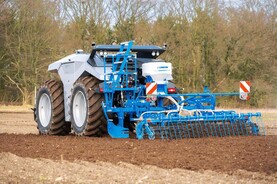Broken spell
Many growers got bits of cutting done over the past week. Winter barley is now pretty much completed, as spring barley, winter rape and the last of the winter oats goes under the knife. Indeed, some spring oats were also cut. There was an amount of lodging and severe crop damage in recent weeks, caused by severe local hail showers.
Yield reports are variable from all crops. Early spring barley has generally yielded well and much of it has protein levels well below the new 9.7% threshold for distilling. Winter oat yields are variable also, but generally good, with a number of crops finishing either side of 4t/ac at low moistures. Early oilseed rape crops are quite variable too, with some yielding lower than expected with yields ranging from 1.3 to 2.0t/ac.
Many crops show a level of uneven ripening in fields, possibly due to soil variability. But thankfully, they are much more uniform than last year.
Stubbles
It is great to see so many stubbles being cultivated this year. Once they are cleared, get a shallow cultivation done to encourage weed seed germination (especially grass weeds), as there is plenty of moisture about. If you have time until the next crop, consider putting in a cheap catch crop mix just to have something growing.
Catch crops, like any other manure source, are an investment in the future productivity of your land. They also provide an opportunity to apply and soak up organic manures as a fertility builder, but avoid planting too early when using high N products like pig or poultry manure, as they can drive excess vegetation.
Choose the species to plant with respect to rotation, time of planting, time in the ground etc.
Keep stubble cultivation as shallow as possible, but tighten cultivated ground to encourage germination. Keeping more of the trash close to the surface may also help aphid predators and that might be valuable.
Oilseed rape
With many stubbles already cleared, this is a great opportunity to get oilseed rape planted. MATIF November rape is currently €528/t – equating to over €500/t dry ex farm. The current MATIF price for November 22 is €458/t and this must be well worth considering locking into once you plant. Winter rape means acres sown with the potential to get some organic manure under the crop to reduce nitrogen cost.
Target winter rape planting from mid to end of August – later further south. Use the later dates for fields to be treated with high N organic manures like pig or poultry. Target seed rates should be 30-40 seeds/m2 for hybrids and 70-80 seeds/m2 for conventional varieties.
Clearfield varieties provide an opportunity to grow rape in land that is heavily infested with brassica weeds, volunteer rape or weeds like hedge mustard. Sowing a variety with a CL prefix enables the application of a specific herbicide – Cleranda – which can kill those weeds, but not damage that variety. Care is needed when growing multiple varieties and at spraying.






 This is a subscriber-only article
This is a subscriber-only article










SHARING OPTIONS: